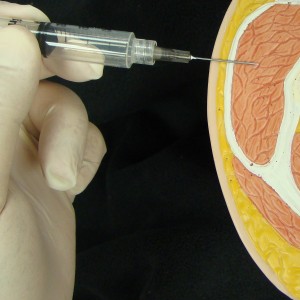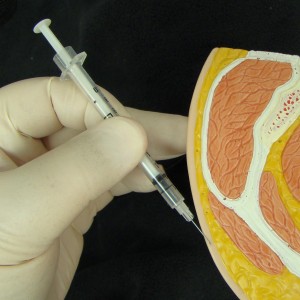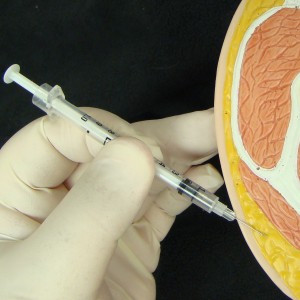Commonly included among the injection methods of drug administration are subcutaneous (beneath the skin), intramuscular (within the substance of the muscle), and intradermal (within the dermis).
These injection methods are also referred to as parenteral (other than through the intestine).
[otw_is sidebar=otw-sidebar-1]
Because of the accuracy of these methods of administration, these injections provide the patient with a more precise amount of drug and a more rapid onset of drug action. These procedures will be discussed in more detail later in this subcourse.
a. Subcutaneous (Hypodermic) Injection. The drug is injected by syringe and needle into the tissues just beneath the skin. A preparation for subcutaneous use must be a sterile liquid capable of complete absorption or it will irritate the tissues. Although the subcutaneous injection may be given in almost any area of the body, the usual sites are the lateral (outer) aspect of the upper arms and the anterior (front) surface of the thighs.
b. Intramuscular Injection. The drug is injected into a muscle, usually in the buttocks, sometimes in the upper arm or the thigh. The needle is inserted at a 90 degree angle to the skin, through the skin and subcutaneous tissue into the underlying muscle.

c. Intradermal Injection. The drug is injected into the upper layers of the skin, rather than under the skin as in a subcutaneous injection. Minute amounts (0.1 ml) and less are given intradermally, usually to test for drug sensitivity before administering larger amounts by other methods. The medial (inner) surface of the forearm is the site most frequently used.


